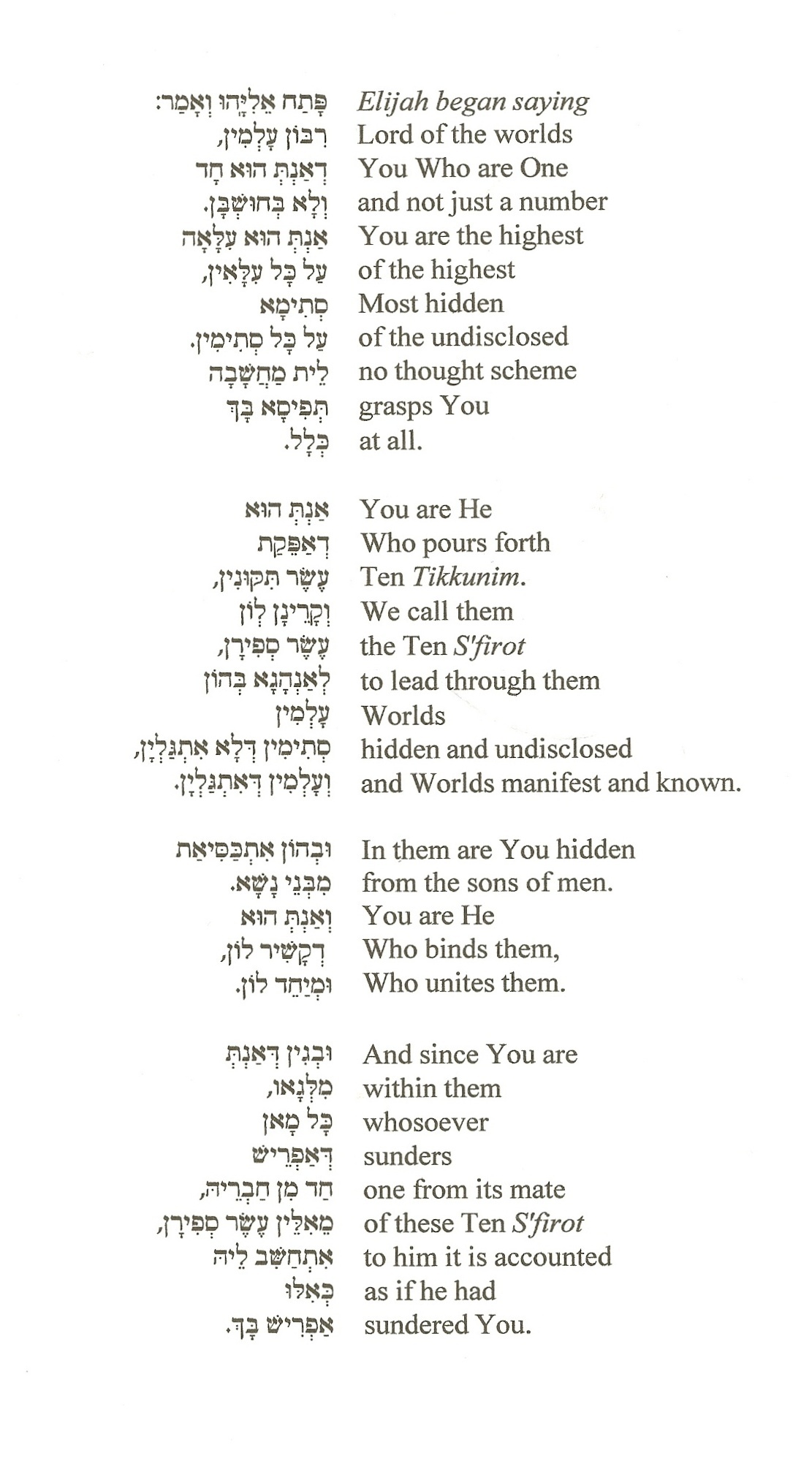Music for Sefirot
Wednesday, December 10th, 2008Dear Friends:
Reb Zalman: “I would love it if someone were to write these themes into a symphony in seven movements that we could use for the Simchat Torah dances.” (From “Simchat Torah Processions”.)
The themes Reb Zalman references in this quote are those associated with each of the seven days of Sukkot and also with the seven processions of Simchas torah. Each day and procession are associated with one of the seven sefirot / divine attributes: Chesed / LovingKindness, Gevurah / Strict Justice and Discernment, Tiferet / Balance, Mercy and Harmony, Netzach / Persistence, Focus, Hod / Beauty and Aesthetics, Yesod / Foundation, Malchut / Kingship, Shechinah / divine in-dwelling, tikkun / repair and a healed planet.
When I first read Reb Zalman’s statement, I envisioned a ballet with seven movements based upon the composition. Halevay / God-willing such a piece and such a production will come to fruition so we can all hear and see it!
Zalman has sometimes spoken of particular pieces of music that evoke associations in us of specific sefirot. In this post, I have put together various recordings of classical music with such associations. I brainstormed the list based upon my own understanding of Sefirot; the list is a current snapshot of a subjective understanding and association with each Sefirah.
I hope you will find this useful in your connections to Sefirot and God. Enjoy (click a composer’s name below to hear the music)! Please place suggestions for music that you associate with Sefirot in the comments section, below. Gabbai Seth Fishman, BLOG Editor
Music for Sefirot, 5769
Chesed: Ravel: Pavanne, Barber: Adagio for strings, Tchaikovsky: Symphony 6, mvt 2, Gershwin: Rhapsody in Blue (please ff to section from 5:34 to 7:42), Dvorak: Symphony 5, Wolf: “Schlafendes Jesuskind“, Massenet: Meditation from Thais, Tchaikovsky: Symphony 6, mvt 1 (please ff to section from 8:27 to end), Vaughan Williams: Fantasia on a Theme by Tallis, Vaughan Williams: Fantasia on Greensleeves, Brahms: “Wiegenlied“, Wolf: “der Genesene an die Hoffnung“.
